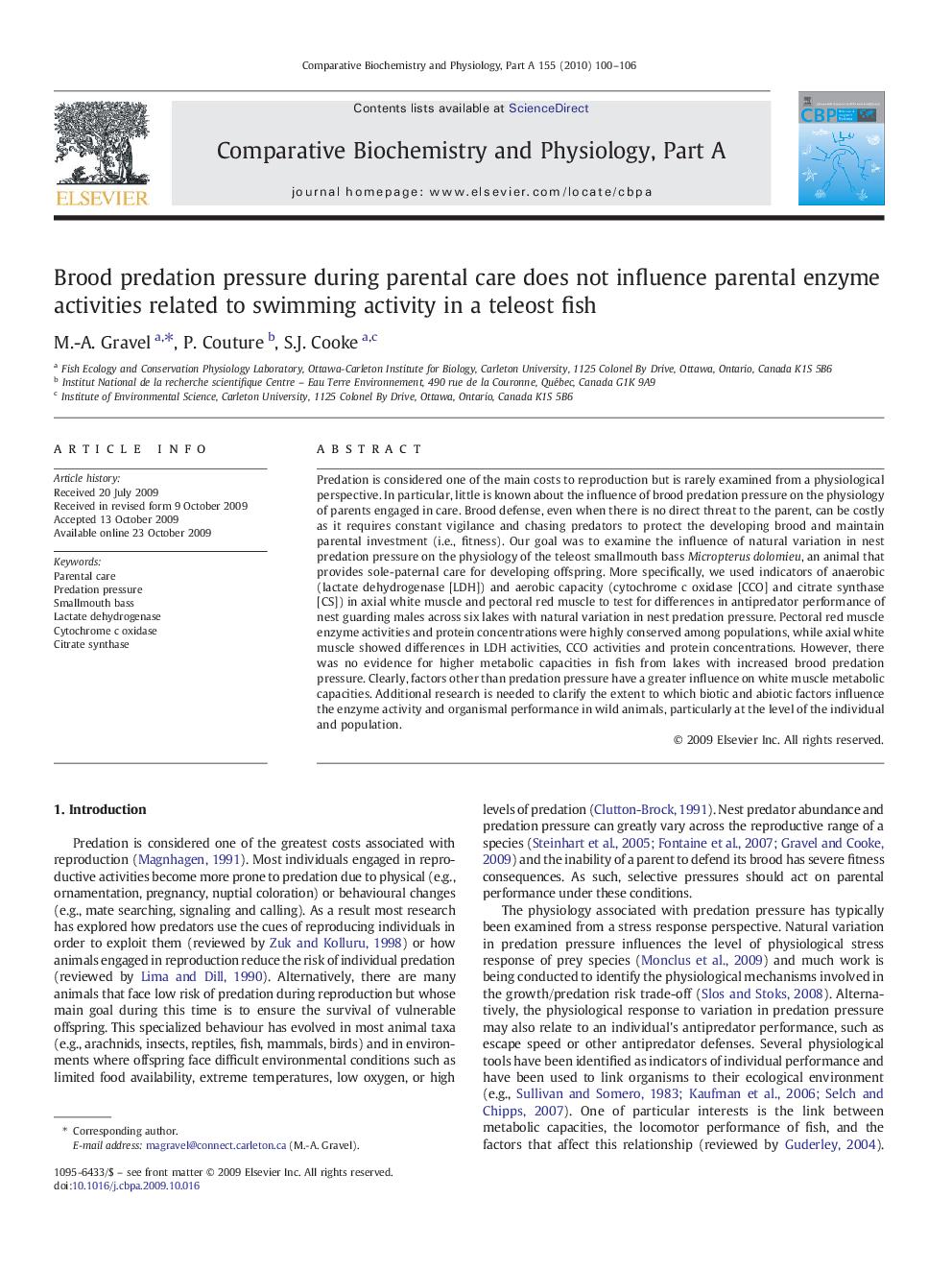| Article ID | Journal | Published Year | Pages | File Type |
|---|---|---|---|---|
| 1974303 | Comparative Biochemistry and Physiology Part A: Molecular & Integrative Physiology | 2010 | 7 Pages |
Predation is considered one of the main costs to reproduction but is rarely examined from a physiological perspective. In particular, little is known about the influence of brood predation pressure on the physiology of parents engaged in care. Brood defense, even when there is no direct threat to the parent, can be costly as it requires constant vigilance and chasing predators to protect the developing brood and maintain parental investment (i.e., fitness). Our goal was to examine the influence of natural variation in nest predation pressure on the physiology of the teleost smallmouth bass Micropterus dolomieu, an animal that provides sole-paternal care for developing offspring. More specifically, we used indicators of anaerobic (lactate dehydrogenase [LDH]) and aerobic capacity (cytochrome c oxidase [CCO] and citrate synthase [CS]) in axial white muscle and pectoral red muscle to test for differences in antipredator performance of nest guarding males across six lakes with natural variation in nest predation pressure. Pectoral red muscle enzyme activities and protein concentrations were highly conserved among populations, while axial white muscle showed differences in LDH activities, CCO activities and protein concentrations. However, there was no evidence for higher metabolic capacities in fish from lakes with increased brood predation pressure. Clearly, factors other than predation pressure have a greater influence on white muscle metabolic capacities. Additional research is needed to clarify the extent to which biotic and abiotic factors influence the enzyme activity and organismal performance in wild animals, particularly at the level of the individual and population.
